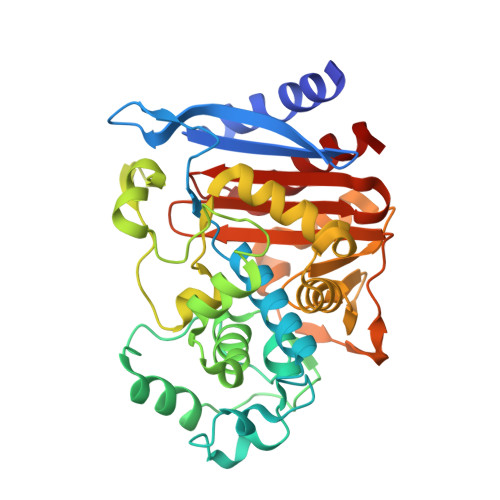Structural basis for the extended substrate spectrum of AmpC BER and structure-guided discovery of the inhibition activity of citrate against the class C beta-lactamases AmpC BER and CMY-10.
Na, J.H., Cha, S.S.(2016) Acta Crystallogr D Struct Biol 72: 976-985
- PubMed: 27487828
- DOI: https://doi.org/10.1107/S2059798316011311
- Primary Citation of Related Structures:
5GGW, 5JOC - PubMed Abstract:
AmpC BER is an extended substrate spectrum class C β-lactamase with a two-amino-acid insertion in the R2 loop compared with AmpC EC2. The crystal structures of AmpC BER (S64A mutant) and AmpC EC2 were determined. Structural comparison of the two proteins revealed that the insertion increases the conformational flexibility of the R2 loop. Two citrate molecules originating from the crystallization solution were observed in the active site of the S64A mutant. One citrate molecule makes extensive interactions with active-site residues that are highly conserved among class C β-lactamases, whereas the other one is weakly bound. Based on this structural observation, it is demonstrated that citrate, a primary metabolite that is widely used as a food additive, is a competitive inhibitor of two class C β-lactamases (AmpC BER and CMY-10). Consequently, the data indicate enhancement of the flexibility of the R2 loop as an operative strategy for molecular evolution of extended-spectrum class C β-lactamases, and also suggest that the citrate scaffold is recognized by the active sites of class C β-lactamases.
Organizational Affiliation:
Department of Chemistry and Nano Science, Ewha Womans University, Seoul 03760, Republic of Korea.
















